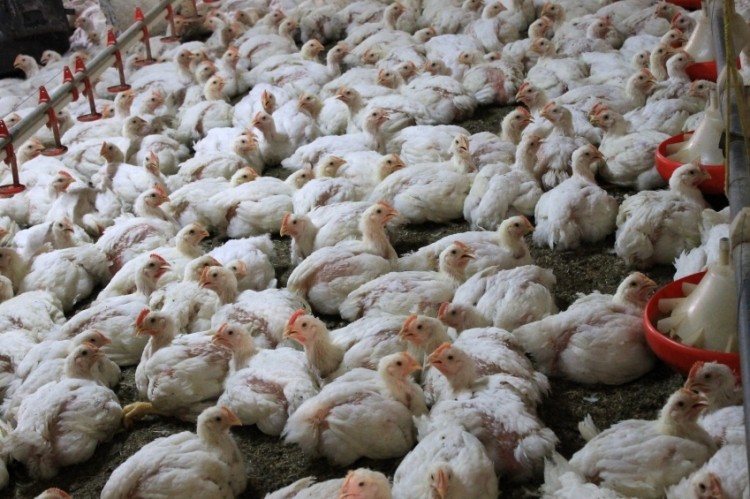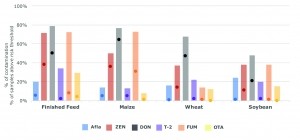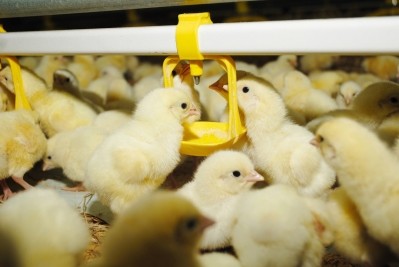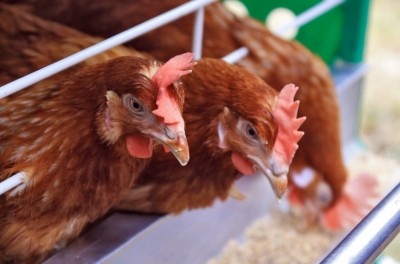Poultry feed analysis shows production most at risk from DON

In our second look at the results, we report on the data showing the impact of the 2015 mycotoxin contamination levels in various feedstuffs on poultry production.
Different livestock species have varying sensitivities and reactions to assorted mycotoxins, according to Sabine Masching, survey lead and mycotoxin risk management product manager at Biomin.
Because their diets are made up of a variety of combinations of agricultural commodities, mycotoxin exposure can differ considerably from one species to the next, she said.
The negative impacts of mycotoxin contamination also depend on the general health status of the animal and environmental conditions, said Masching.
In addition, she said, mycotoxins tend to occur in groups, not individually, and can have compound, negative synergistic effects as a result of this co-occurence.

Poultry feed contaminant levels
In terms of poultry feed inputs, DON was present in 79% of finished feed, 77% of maize, 68% of wheat and 48% of soy samples tested, found Biomin in its 2015 crop analysis.
The company reported that the average concentration of DON exceeded risk thresholds for poultry in 50%, 64%, 47% and 21% of cases for finished feed, maize, wheat and soy samples, respectively.
The feed additives producer found T-2 toxin in 34% of finished feed, 13% of maize, 22% of wheat and 20% of soy samples.
It noted that average T-2 concentrations above risk thresholds for poultry were 2% for finished feed, 5% for maize and 2% for wheat and soy, respectively.
Fumonisins (FUM) occurred in 72% of finished feed, 73% of maize, 14% of wheat and 38% of the soy samples tested, and exceeded risk threshold concentrations in 8%, 31%, 1% and less than 1%, respectively, according to the analysis.
Zearalenone (ZEN) was present in 71% of finished feed, 50% of maize, 37% of wheat and 38% of soy samples, and exceeded risk threshold concentrations in 38%, 36%, 14% and 11% of cases, respectively, said Biomin.
And its analysis showed aflatoxins (Afla) contamination in 20% of finished feed, 14% of maize, 16% of wheat and 24% of soy samples tested. That mycotoxin exceeded risk threshold concentrations in 5% of cases for finished feed and maize and 1% in cases of wheat and soy.
Ochratoxin A (OTA) was found in 29% of finished feed, 8% of maize, 12% of wheat and 15% of soy samples, and exceeded risk threshold concentrations in 4%, 1% and less than 1% of cases, respectively, said Biomin.
Mycotoxin risks for poultry production
The effects of Afla exposure in poultry, according to Biomin, can include decreased hatchability of eggs, increased susceptibility to bruising during processing, decreased resistance to environmental and microbial stressors, and increased susceptibility to diseases.
ZEN in poultry feed can reduce ovary size, lower egg production, reduced testes size and weight, and cause behavioral changes, it said.
DON exposure can result in feed refusal in poultry, or impaired gut health, diarrhea and pasty vents as well as decreased resistance to environmental and microbial stressors and increased susceptibility to diseases.
T-2 also poses a significant threat to poultry as exposure to the toxin can induce feed refusal in the birds, and also decreased resistance to environmental and microbial stressors such as E. coli and C. perfringens, along with lack of reflexes and beak, mouth and gizzard lesions, showed the report.
FUM poses a threat to the birds in that it can hamper growth, impair feed conversion, decrease egg production and quality of eggs and can induce diarrhea and impair intestinal health, said the producer.
And OTA exposure in poultry can result in reduced egg production, egg weight and egg shell quality, blood and meat spots in the eggs, retarded growth, increased feed conversion, renal dysfunction, increased water consumption, and liver damage, it added.













